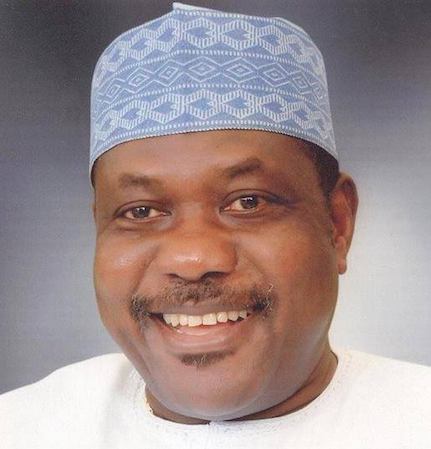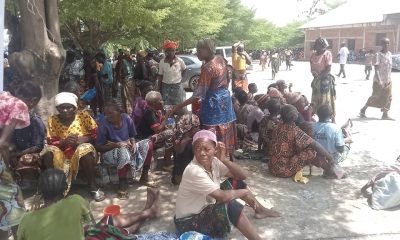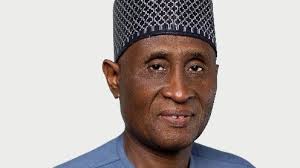NEWS
The Disconnect between Matter, Energy and Chronic Disease Management
By Mukaila Kareem
I was recently in Canada for the annual conference of the International Association of Nigerian Physical Therapists living in North America. I am certain I will have a lot of explanations to make by the time my relatives who live in Calgary find out that I was in their hometown without stopping by.
My itinerary was to arrive at 12 p. m. local time and make a brief surprise visit to my relatives before the welcome and informal gathering of the association members in the evening. However, it turned out that my second flight was canceled and I had to stay overnight in Atlanta due to computer glitches that affected the airlines that weekend.I missed the scientific session on Friday and barely met the dinner gathering in the night.
You may be wondering what this has got to do with metabolic energy and chronic disease management but bear with me, as the one hour fourteen minutes bus ride for the planned picnic from Calgary to Drumheller, the dinosaur capital of the world, inspired the writing of this article.Suffice it to note that I have been to Calgary before but never ventured into the countryside and, as with all places, experiences inside the big cities never represent the real-life experiences of most people. The landscape from Calgary to Drumheller is no different from driving anywhere in the flat plains of Midwest United States, but instead of corn and soybean fields, there are wheat and beautiful yellowish canola plantations. My biggest shock was the oil fields that occasionally dotted the canola and wheat plantations. There are unmanned pulley systems, called jack pumps, drilling oil in real time on the farms! Alberta’s so-called oil sand was formed from the decomposition of plants and marine life about 200 million years ago, when the western part of Canada was believed to be mostly underwater.
This experience made me wonder why petroleum engineers do not engage in debates about kerosene, gasoline, diesel, or engine oil. These are constituents of petroleum or “crude oil” and each of them has different lengths of carbon chains attached to hydrogen atoms. They are combustible under various conditions, but these conditions are basic facts in all engineering fields, perhaps because the core training of engineering is about different kinds of energy masked in complex mathematical formulae (I hate math!). For example, you can drive your car at 70 miles per hour on a full or half tank and the purpose of keeping your car in motion remains the same until you run out of gas.
This is not how metabolism works: How the body processes your pizza, or my favourite West African pounded yam, is different when we are hungry than when we are full. In other words, the flow of energy when foods are broken down could be linear, circular or bifurcated for the purpose of building, burning or both. While the engineers are taught to follow the energy flow in a closed system, the modern health practice seems to be chasing the shadow by focusing on the nature of macronutrients that can be distilled to the confusing high fat, low carb and low carb, high fat diets.
Be it engineering or medicine, there is a world of difference between matter, a tangible substance that occupies space and energy, a property that does not have mass or volume. However, while energy cannot be separated from my favourite West African pounded yam or the gasoline, matter has been described as “a frozen light.” Energy has also been described as “not itself stuff (but) something that all stuff has.” As it turns out, photosynthesis is the primary storage that provides the energy that powers life. It initially stores intangible photons or sunlight energy in transient energy carrying molecules called ATP and NADPH, in what is often called light reaction.
How then do plants handle useful excess energy? As a son of an African farmer, I am familiar with making barns to store harvested corn or yams. In the same vein, the plants trap atmospheric carbon dioxide as the storage molecule, in what is called carbon fixation, but no different from making barns or my mom buying a bunch of baskets to store her kola nuts before selling them off-season, when the glut is over. A plant enzyme called Rubisco hitches a molecule of atmospheric carbon dioxide molecule on a 5-carbon compound to make two molecules of 3-carbon sugar.
This sugar can be regarded as my mom’s kola nut “basket,” which is initially energised by ATP and then embedded with the sun derived high energy photosynthetic electrons from the transient NADPH, to form the basic nutrient called glyceraldehyde-3-phosphate. This simple sugar is the prime end-product of photosynthesis and can be metabolised as an immediate food nutrient by both plants and animals. Glyceraldehyde-3-phosphate is therefore the energy-rich simple sugar that connects photosynthesis with metabolism.
Beyond being the first nutrient compound, plants can combine and rearrange glyceraldehyde 3 phosphate to form simple sugars (glucose, fructose and galactose), starch (tubers and grains) and structural elements, such as cellulose found in trees and woods. Furthermore, the plants use this sugar as the building block to synthesise amino acids, proteins and fats. In other words, fats and proteins are offshoots of sugar! In physics, macronutrients are regarded as matter with “frozen light” or stored energy. During combustion, the energy in gasoline is used to produce motion in your car, while giving off water vapour and carbon dioxide.
In metabolism, glucose, a six-carbon molecule, is slowly and systematically broken down into two 3-carbon pyruvate molecules. Interestingly, breaking down pyruvate involves stripping off 3 carbon dioxide molecules, called decarboxylation, while harvesting the high energy hydrogen electrons to produce NADH. To prevent from blowing us apart, the hydrogen electrons are delicately guided to combine with oxygen to form water (H2O) and release the energy currency of all cells called ATP.
Here comes the big disconnect. In clinical settings, the regimen of controlling blood sugar with medications or insulin shots primarily converts glucose to fat synthesis, which in the context of more substrates secondarily leads to the formation of cholesterol. In other words, a 6-carbon glucose, a simple sugar, is transformed to at least 16-carbon palmitic acid (fat) and then to a more complex 27-carbon cholesterol compound. These are all anabolic pathways that build more matter and do not break the bond energy to form water and carbon dioxide. Sadly, unlike a typical engineer, a modern healthcare practitioner does not address energy flow within the context of metabolic syndrome.
I have seen this movie for more than 30 years where patients with diabetes on the so-called hypoglycemic agents end up with increased weight gain and high levels of triglycerides and cholesterol in the blood, otherwise called hyperlipidemia. This is why most patients on the so-called intensive glucose control end up taking not just medications for lowering blood glucose but also cholesterol medications, a case of creating more problems and then taking credit for seeming to solve them.
I had the opportunity to jaw-jaw about this unfortunate polypharmacy and chronic disease management with a new friend during the conference’s African Night’s Owambe party, the Nigerian style. I was led to the table where my mentor and teacher, Professor Balogun, was also seated. There were two gentlemen I did not recognise but I casually introduce myself by first name to the gentleman closer to me, but Professor Balogun did a more formal introduction over the loud Naija songs in the background. Lo and behold, Ema Gye is a University of Jos trained medical doctor who practices lifestyle medicine in Calgary and with that we talked like we’ve known each other forever.
It was another great gathering of Nigerian Physiotherapists living in the USA and Canada. Thank you, Prof. E. B. John and your exco team, and immense thanks to the local organising committee led by Mr Tunji Bello and Mrs Adejumo. I missed the scientific session, but the picnic to Drumheller, Alberta was like a scientific session on the road and I truly had a blast.
Kareem, a doctor of physiotherapy, writes from the USA and can be reached via makkareem5@gmail.com
NEWS
Breaking: George Akume remains SGF – Presidency

The presidency says there has been no change in the status of Senator George Akume, as Secretary to the Government of the Federation.
This is according to a statement by Special Adviser to the President on Information and Strategy, Bayo Onanuga.
Mr Onanuga says President Bola Tinubu, currently in Saint Lucia, has not made any new appointments.
He described the information circulating about Akume’s replacement as untrue, adding that agents of mischief fabricated it.
GeorgeAkume
sgf
NEWS
Diri Campaigns Against Drug Abuse, Trafficking

From Mike Tayese, Yenagoa
Bayelsa State Governor, Sen. Douye Diri yesterday, led a campaign against drug abuse and illicit trafficking as part of activities commemorating the International Day Against Drug Abuse and Illicit Trafficking.
Diri advised people of the state, particularly the youths, to shun hard drugs and trafficking of illicit substances, saying they were harmful to their health and to the society.
The Bayelsa governor, who spoke shortly after the weekly Prosperity Walk exercise at the Samson Siasia Sports Complex in Yenagoa, also urged youths to develop themselves by acquiring a skill and work towards actualising their God-given potential.
“We just completed a nine to 10km walk, which is a test of our fitness. As it is said, health is wealth.
“Today is the International Day Against Drug Abuse and Illicit Trafficking. We are not only observing the global campaign, we are also leading it here in Bayelsa.
“No one in his right senses goes to commit crime and violent acts except that individuals are under the influence of hard drugs. My advice to youths is to be self-confident, have the fear of God and develop your innate potential for you to become a star.”
He implored youths to emulate the shining example of a Bayelsa-born United States-based athlete, Victory Godah, who was discovered through the state’s sports programmes.
He commended her gesture of donating sporting equipment as a way of giving back to the state.
“Victory Godah from Ekeremor local government area was discovered here and because of her skill, she is now at the University of Minnesota, United States. She has given back to the state through sports equipment so that more of us can have that access.”
In his remarks, the Commissioner for Health, Prof. Seiyefa Brisibe, emphasised the importance of the weekly walk, stating that participants above 40 years would have their blood pressure controlled after taking about 5,000 steps.
Also, state chairman of the Drug Abuse, Addiction, Prevention and Rehabilitation Committee, Dr Peter Owonaro, said the committee’s outreach in the state had been a huge success, noting that a recent research indicated that the drug abuse prevalence rate in Bayelsa dropped by five per cent from 21.4 per cent.
Also, the state commander of the National Drug Law Enforcement Agency (NDLEA), Kanu Sunny, lauded the state government for its unprecedented support in the fight against drug abuse and trafficking.
He said the campaign was taken to secondary schools as well as tertiary institutions and encouraged all to join in the war against the menace.
Foreign News
Ally of Cameroon President, 92, Quits ‘Broken’ Government to Challenge Him

Issa Tchiroma Bakary – a prominent minister and long-time ally of President Paul Biya – has quit Cameroon’s government, in the hope of ending 92-year-old Biya’s four-decade grip on power in upcoming elections.
Just four months before the central African nation went to the polls, Tchiroma said the Biya administration he belonged to had “broken” public trust and he was switching to a rival party.
“A country cannot exist in the service of one man,” he said on Wednesday.
While he was communications minister, Tchiroma notably came under fire for denying – then backtracking on his denial – that Cameroonian soldiers had killed women and children in a viral video.
His other roles during almost two decades in government include being a spokesman for the Biya government, and, until his resignation on Tuesday, he was employment minister.
Paul Biya – the world’s oldest head of state – has yet to confirm if he will attempt an eighth term as president. Last year, the country banned reports on the president’s health following rumours he had died.
As this election approaches, high unemployment and soaring living costs are of concern to many Cameroonians, as are corruption and security. A separatist insurgency in the English-speaking provinces as well as jihadists operating in the northernmost region have forced many thousands of Cameroonians from their homes in the past decade.
Cracks in Tchiroma’s relationship with President Biya were blown open earlier this month, when he told crowds in his home city of Garoua that Biya’s time in power had not benefited them in any way.
Tchiroma, widely reported to be 75, continued this criticism in a 24-page manifesto released a day after his resignation – promising to dismantle “the old system” so that Cameroon could move beyond “abuse, contempt, and the confiscation of power”.
One of his proposed solutions is federalism – he is offering to hold a referendum on devolving more power to Cameroon’s 10 provinces. This has long been mooted by many as a solution to the country’s so-called Anglophone crisis.
Specifically addressing English-speaking Cameroonians, who have long complained of marginalisation and discrimination in Francophone-dominated public institutions, he said “you do not need people to speak for you – you need to be listened to” and that “centralisation has failed”.
Tchiroma also used his manifesto to say Cameroon “has been ruled for decades by the same vision, the same system. This model, long presented as a safeguard of stability, has gradually stifled progress, paralysed our institutions, and broken the bond of trust between the state and its citizens”.
As the October presidential election approaches, rights groups have condemned the government’s crackdown on dissent.
Shortly after Tchiroma announced his plans to run for the presidency, the government reportedly announced a ban on all political activities by his Cameroon National Salvation Front (CNSF) party in a sub-district of the Far North region – a part of the country where he is said to be an influential power-broker.
Weeks earlier, fellow presidential hopeful Maurice Kamto had his movements curtailed during a two-day police stakeout in Douala, after promising supporters at a rally in Paris that he would protect Biya and his family if he wins in October.
Parliamentary elections that were also supposed to take place earlier this year have been delayed until 2026.
Reaction to Tchiroma’s presidential bid has been mixed – some think he is canny.
“By positioning himself as the elder statesman who ‘saw the fire coming’, Tchiroma is hedging that his break with Biya will be seen as bold – not opportunistic,” Cameroonian analyst and broadcaster Jules Domshe said.
“From economic fallout to youth unemployment, insecurity, and growing unrest in the North-West, South-West, and Far North [regions], Cameroon is ripe for change.”
Opposition voices are divided – some want Tchiroma to support Kamto, who was the runner-up in 2018 with 14% of votes. But others say he is tainted by his long association with Biya.
“He cannot embody change… He was part of the system for too long. The youth do not trust him,” says Abdoulaye Harissou, a legal notary and prominent critic once detained by the government.
Another member of the opposition – Jean Michel Nintcheu of the APC coalition – simply said: “We don’t see Tchiroma as a potential winner.”
| ReplyReply allForwardAdd reaction |


















